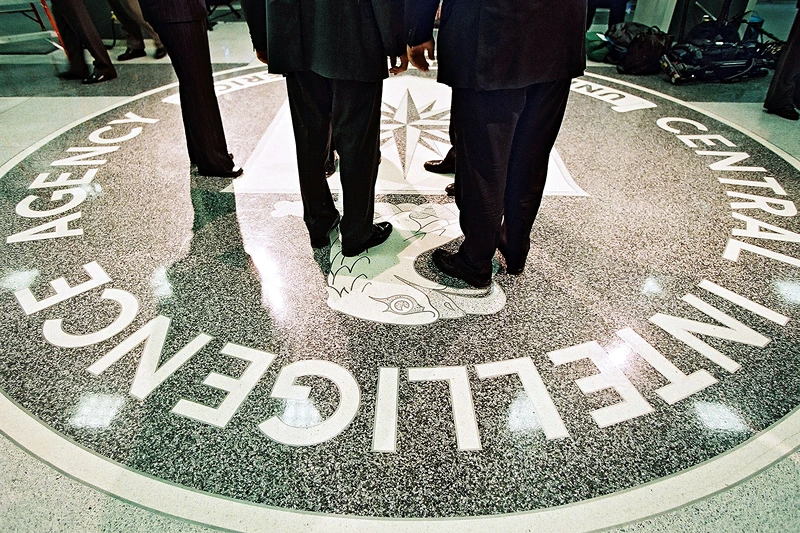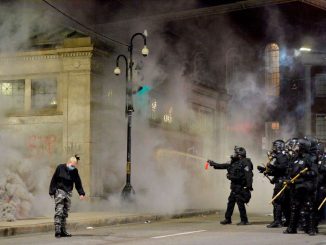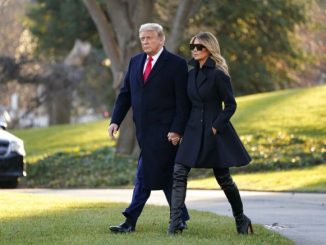

OAN Roy Francis
UPDATED 1:15 PM PT – Monday, December 26, 2022
In this edition of the Twitter Files released on Saturday, Matt Taibbi talked about how the FBI monitored accounts, including the time period leading up to the 2020 election. Also how the FBI was not the only government agency that was involved with Twitter.
After weeks of Twitter File releases, the Federal Bureau of Investigation (FBI) responded and instead of refuting the allegations or providing evidence otherwise, they called the reporters who worked on them conspiracy theorists whose “sole purpose” is to discredit them.
The files, however, showed that the FBI is not the only agency that was working with Twitter. Although they were the agency that had the most contact, there was a number of federal agencies that were in also in constant communication with the platform. These agencies included the State Department, the Pentagon, and the Central Intelligence Agency (CIA).
The files revealed that there was so much contact with all these agencies that Twitter executives were losing track of who they were supposed to meet with and when the meetings were taking place.
Most of the reports and communications was coming through the FBI’s San Francisco field office. Agents like FBI agent Elvis Chan were emailing Twitter executives to see if they could invite “OGA” to an NGO-sponsored conference that was coming up.
OGA (Other Government Organization) was used to refer to the Central Intelligence Agency (CIA) according to multiple intelligence officials and contractors.
One of the executives at Twitter was ex-CIA officer Ray McGovern. He had worked for the government agency for over 27 years.
It was confirmed in an email sent from senior legal executive Stacia Cardille to ex-FBI lawyer Jim Baker at Twitter, that both the FBI and CIA were attending the conference with Twitter.
The government, however, was not only in contact with just the social media platform, but almost every major tech firm which included Facebook, Microsoft, Verizon, Reddit and many others.
The multi-agency Foreign Influence Task Force (FITF) would hold constant meetings and conferences with Twitter, and they would always invite many agents from the different agencies to their meetings.
Even though that task force was meant for foreign influence, they were also sending “mountains” of domestic moderation requests. Many of these requests were being delivered through Teleporter, a platform where messages would delete after a certain period of time.
As the 2020 election was approaching the requests were increasing, many of the requests were “problem” accounts on Twitter.
Employees at Twitter had to figure out how to be able to sort and prioritize the overwhelming amount of requests being sent to them. Most of the requests were from the FBI as they were monitoring accounts for Twitter violations, to the surprise of some Twitter executives.
The New York FBI office was monitoring articles off of the social media platform. They were requesting that Twitter gives them the “user IDs and handles” of the accounts involved with certain articles. One such article was from the Daily Beast. Employees of Twitter were compliant with the requests.
Executives at the tech giant were under increasing pressure from federal agencies to find any links within accounts that they were given to foreign influence. Even though the employees were not finding any evidence in a number of accounts, they would have to “brainstorm” to “find a stronger connection.”
The State Department had been making weak assertions of Russian influence which led to the ex-CIA officer Ray McGovern explaining that they were not finding any technical evidence. The government agencies were becoming more and more aggressive.
Agencies were also communicating through the FBI and FITF to other high-profile platforms and not just with Twitter.
These emails were confirmed by Former CIA agent John Kiriakou to be from the CIA according to their formatting.
A report listed accounts accusing them of “Ukraine ‘neo-Nazi’ propaganda.” These accounts included information that in 2014 Joe Biden had helped stage a coup and get his son a high position of the board of Burisma.
Another report listed a number of accounts that accused the Biden administration of corruption in vaccine distribution as a Russian influence campaign.
A site that was documenting rights abuses by the Ukrainians was reported as having been directed by the Russians as well.
Even though the origins of these accounts might not be known, some of the information on them might have been true. So, tech platforms were faced with a difficult freedom of speech dilemma. Do the American people have the right to see pro-Maduro or anti-Ukrainian accounts? Or does the government have the right to block that information?
The FBI, as well as other government agencies, had taken it upon themselves to root out accounts that they deemed as problematic. With the help of Twitter and other big tech platforms, the accounts were taken down, blocked, or their reach was limited. In some cases, even when Twitter executives could not find any evidence to support the agencies’ claims, they still found a way to oblige to the requests.





Be the first to comment